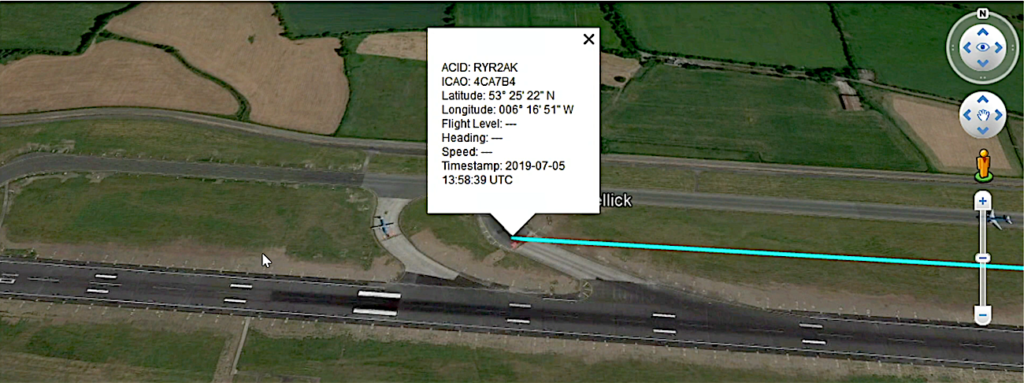
An example of a graphical ADS-B position report generated by Aireon ALERT. Photo: Aireon
The aviation industry’s first-ever public global aircraft emergency locating service, Aireon ALERT, has begun live operations out of Ireland’s Ballygirreen communications base.
Aireon ALERT provides registered aircraft operators, aviation regulators and search-and-rescue organizations with the last known position of ADS-B equipped aircraft to help reduce accident search areas and keep controllers and dispatchers updated on flights experiencing distress. Aireon opened the pre-registration period for the service in August 2018, and now has more than 193 airlines, air navigation service providers (ANSPs) and search-and-rescue agencies using it.
IAA and Aireon are providing the service free of charge, in an effort to help prevent MH370-style incidents from occurring where aircraft operating in remote areas lacking terrestrial radar are unable to be tracked. In the event of an emergency, registered users can contact IAA with a flight ID or 24-bit ICAO address and receive four-dimensional report including the last 15-minutes of ADS-B tracking information for the flight they’re inquiring about verbally and through email.
Users also instantly receive two graphical depictions of the aircraft’s flight path. One gives aircraft position relative to global airspace, while the other depicts its position within the specific flight information region it is operating in.
Sean Patrick, general manager of oceanic services at IAA, said ALERT operators also assign the queried aircraft a KML file that can be plugged into Google earth to depict a graphical representation of the aircraft’s flight path and last known position report. IAA is operating the service 24 hours a day.
“You’re talking about a position report to within meters,” Patrick said, during a press conference announcing the go-live status of Aireon ALERT.
IAA, which is also an investor in Aireon, volunteered to provide staff to operate the free service to registered users as part of the broader space-based ADS-B surveillance service which officially went live in April. The ANSP’s air traffic control centers already monitor up to 1,700 flights per day between North America and Europe, and 950,000 aircraft movements per year.
Patrick said the service is geared toward commercial airlines, but is open to operators across all segments.
“The business aviation community are more than welcomed to operate this service, it is catered toward the commercial end of the market,” Patrick said. “What we don’t want is the smaller aircraft, the GA type aircraft to utilize the service, simply because we don’t have the capabilities of answering all the queries that we would get, but if there is an issue with a GA-type aircraft that can be escalated through the normal circles.”
IAA, in coordination with NATS UK, and NAV Canada are conducting ongoing systems and data validation of Aireon’s global space-based ADS-B surveillance service in the North Atlantic airspace with full operational service planned for November 2020. Thus far, 11 ANSPs are commercial space-based ADS-B surveillance customers.